Sunday: 12:00pm – 4:30pm
Monday: Closed
Tuesday - Saturday: 9:00am – 4:30pm
Upcoming special events:
On Tuesday, Oct. 14, we will host Homeschool Day and admission prices will differ for this special event.
On Wednesday Oct. 22, the museum will close at 3 p.m. for a private event. The historic houses, museum store, and Walker Education Center will remain open until 4:30 p.m.
On Tuesday, Nov. 4, the museum will close at 3 p.m. for a private event. The historic houses, museum store, and Walker Education Center will remain open until 4:30 p.m.
Holiday Closures:
Thursday, November 27 & Friday, November 28 (Thanksgiving Break)
Includes same-day admission to the Sam Houston Memorial Museum. There is no extra charge for entrance to special exhibitions.
Adults: $6.00
Seniors (65 and older): $5.00
SHSU Faculty/Staff: $4.00
Children (6-18): $4.00
Children (5 and under): Free
SHSU Students with ID: Free
Veterans: Free
**Guided group tours are available by reservation only. Visit the Education page to learn more about booking a guided tour. Guided tour prices are different than regular admission.**
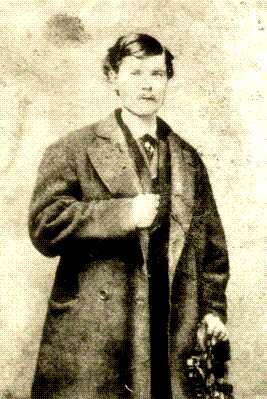 On May 25, 1843 at Washington-on-the-Brazos, the first of eight Houston children was born. Proud parents Margaret Lea and Sam Houston greeted their first son and named him for his father. Sickly at birth, young Sam improved rapidly and soon Houston wrote to a friend describing the baby as "a hearty brat, robust and hearty as a Brookshire pig." Young Sam was the joy of his parents and by the time he was eight his father was able to describe him as a "tall, long and homely lad, fairly smart at some things."
On May 25, 1843 at Washington-on-the-Brazos, the first of eight Houston children was born. Proud parents Margaret Lea and Sam Houston greeted their first son and named him for his father. Sickly at birth, young Sam improved rapidly and soon Houston wrote to a friend describing the baby as "a hearty brat, robust and hearty as a Brookshire pig." Young Sam was the joy of his parents and by the time he was eight his father was able to describe him as a "tall, long and homely lad, fairly smart at some things."
Sam Jr. was taught at home by his mother and a succession of governesses. Then when he was ten years old, the Houstons moved to Independence so that Sam could attend preparatory school at Baylor University. Sam Houston Jr. inherited his mother's artistic ability and at an early age he began drawing and sketching. Houston was proud of his son's accomplishment in reading Latin, but found drawing an idle occupation. Still, young Sam continued his art part time and his sketches of the Confederate Army reflect an acute eye and a practiced hand.
In 1860 Sam Jr. enrolled at Bastrop Military Academy where his proud father noted his credible military and scholastic record. When the Civil War began, young Sam enlisted as a private in Company C , 2nd Texas Infantry, commanded by his father's friend, Colonel Ashbel Smith.
On March 12, 1862 the 2nd Infantry was ordered to the front. During the battle of Shiloh, Sam Jr. was wounded and left for dead. An Army chaplain found him on the battlefield and identified him by the message Margaret Lea had placed in her son's Bible. Months later the young soldier was released from prison camp and made his way to Huntsville, where Margaret barely recognized her son.
After the war, Sam Jr. enrolled in the medical department of the University of Pennsylvania in 1867, and completed his course work for a medical degree and practiced medicine in several Texas towns including Belton and Waco.
In 1875 Sam Houston Jr. married Lucy Anderson, and soon afterward ceased the practice of medicine to devote his time to writing poetry and short stories. Despite his fathers often expressed disapproval of novels and light reading, Jr. wrote a volume of adventure stories, published in 1892.
When his wife died in 1886, Sam Jr. returned to Independence to live with his sister Margaret Lea Houston Williams, until his death on May 3, 1894. Sam Houston Jr. was buried in Independence, near his mother.
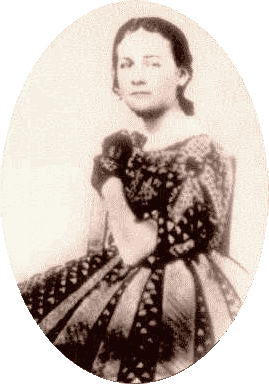 On September 8, 1846 Nancy Elizabeth Houston was born at Raven Hill plantation, fourteen miles east of Huntsville; she was the second child and the first daughter of Sam and Margaret Lea Houston and was named for her grandmothers, Nancy Lea and Elizabeth Paxton Houston.
On September 8, 1846 Nancy Elizabeth Houston was born at Raven Hill plantation, fourteen miles east of Huntsville; she was the second child and the first daughter of Sam and Margaret Lea Houston and was named for her grandmothers, Nancy Lea and Elizabeth Paxton Houston.
Young "Nannie" received her early schooling from her mother, grandmother Lea and a private tutor. Soon her proud father was calling her his "genius". By the time she was six and one half years old, Sam was writing to his eldest daughter from Washington, promising to send her comic papers from the nation's capitol.
On March 14, 1856, when Nannie was nine years old her mother wrote a poem entitled "Our Daughters." She wrote of Nannie: "Our eldest is an Autumn Bloom, just as the summer rose grew pale, She smiled upon our Woodland home, The brightest flower in the Vale."
The Houstons move to Independence in 1853 meant that Nannie could attend the academy operated in conjunction with Baylor University. Soon she was a recognized authority on the bible, and in later years she taught a Bible class at the Methodist church in Georgetown, Texas. She was a talented musician as well, practicing her music on a fine Steinway piano that Sam Houston presented to her when she was sixteen.
In the spring of 1866 there was great excitement in the Houston home. Nannie was nineteen, and she planned to marry Joseph Stiles Morrow, the owner of a mercantile business in Georgetown, Texas. Money was scarce in the Houston home, but Margaret insisted that her daughter have a fine wedding.
Friends brought fabric for Nannie's wedding dress from New York and on the evening of August 1, 1866, Nannie and Joseph Morrow were married in the presence of some three hundred guests who had not seen such a beautiful wedding dress since before the Civil War.
Nannie's wedding trip was just as exciting. The Morrows traveled to New York and visited Niagara Falls, before visiting the old Morrow home in Kentucky. Then the newlyweds settled down to married life in Georgetown. When Nannie's first child was due, she returned to Independence, and Margaret Houston Morrow was born at her grandmothers house on June 4, 1867.
Six months later Margaret Lea Houston died and the five youngest Houston children went to live with Nannie and her husband. The Morrows also reared their own six children, all of whom remember their mother as the personification of all the values of the Houston family. On May 19, 1920 while visitingher eldest daughter, Nannie Elizabeth Houston died and was buried in the city of Georgetown.
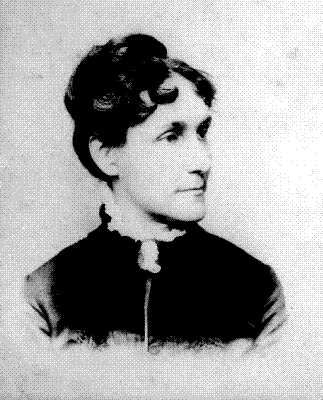 In her early years the Houston's third child and second daughter was said to resemble her mother. In later life, however she became a strong willed, intelligent individual much like her famous father.
In her early years the Houston's third child and second daughter was said to resemble her mother. In later life, however she became a strong willed, intelligent individual much like her famous father.
Born on April 13, 1848 "Maggie" as her father called her, was named for her mother, Margaret Lea Houston. She was the first of the children to be born in the Woodland Home in Huntsville.
When Maggie enrolled at the Baylor Academy in Independence she expressed an interest in learning to write well. Her father wrote to her from Washington "I admire your efforts to write well, and while you cherish a wish to write as you do, you will improve". In later years Maggie's writing so improved that she was able to serve as her father's secretary.
At seventeen, Maggie met and fell in love with Captain Weston Lafayette Williams, who boarded at Nancy Lea's house while attending Baylor University. They were married at a simple ceremony at the Independence Baptist church on October 17, 1866.
The family first lived on a farm at Labadie in Washington County, then moved to the family home in Independence after the death of Maggie's mother. There they reared their three sons and two daughters.
After the death of her husband Maggie continued to live at Independence. Then in 1904 she moved to San Antonio to be near her daughter. She continued to enjoy the company of educated and literate people including the artist Elizabeth Ney, who often rode out in her buggy to visit Maggie.
When Maggie Houston Williams died on March 12, 1906 the flag at the Alamo flew at half mast, and several days later as her funeral procession moved down the streets of Houston the bell in the city hall tower tolled in her honor.
 When Mary William Houston was born on April 9, 1850 both Sam and Margaret Lea expected a boy. They planned to name the child in honor of Andrew Jackson. Sam's mentor. Sam Houston wrote to his wife from Washington: "Poor Sam, he will feel the apparent injustice.... This looks but little like giving him the six brothers, though it appears something like the six little sisters".
When Mary William Houston was born on April 9, 1850 both Sam and Margaret Lea expected a boy. They planned to name the child in honor of Andrew Jackson. Sam's mentor. Sam Houston wrote to his wife from Washington: "Poor Sam, he will feel the apparent injustice.... This looks but little like giving him the six brothers, though it appears something like the six little sisters".
Houston was also astonished when a locket of the baby's hair was clipped by Margaret and sent to him in Washington, to see the "sweet little lock of hair and have it called black by sister, for I assure you when it reached me, it was a beautiful auburn."
As soon as she was old enough, Mary William was enrolled at Baylor Female Seminary, and after her graduation she went to live with her sister Nannie Houston Morrow, in Georgetown, TX. On April 11, 1871, "Mary Willie" as she was known in the family, was married to John Simeon Morrow, a first cousin of her sister's husband.
In 1883-84 Mary Willie and her husband moved to Abilene, where he established a law practice. After his death Mary Willie became the post mistress of Abilene in 1910. She was also an active member of the Presbyterian Church in Abilene.
On December 14, 1931, Mary Willie Houston died at the home of her daughter in Stamford, TX. She is buried in Abilene, Texas.
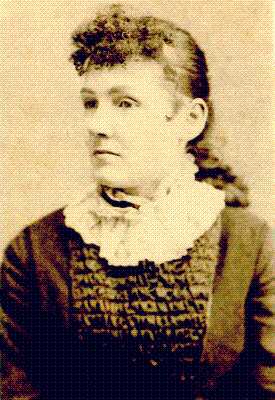 In 1852 Sam Houston's political career was flourishing, and the Texas Democratic convention had submitted his name as a "favorite son" candidate for President of the United States. In February Houston arrived home bearing toys, bonnets, and dresses for Sam and "my pretty little flock of girls".
In 1852 Sam Houston's political career was flourishing, and the Texas Democratic convention had submitted his name as a "favorite son" candidate for President of the United States. In February Houston arrived home bearing toys, bonnets, and dresses for Sam and "my pretty little flock of girls".
The Houston's flock had grown by one, as Antoinette Power Houston had been born on January 20 at the family's Woodland Home. Named for her mother's sister Antoinette Lea Power, Nettie, as she was known in the family, inherited both her parent's literary talents. Following in her mother's footsteps, she had many poems published in newspapers while still a student at Baylor Female College. One of her most famous poems was "The Flag of a Single Star," which was set to music and sung by Texas schoolchildren throughout the state.
When she grew older, Nettie could remember vividly the yellow fever epidemic that spelled her mother's death in 1867, and could recall spreading a "Quilt of evergreens" over her mother's grave with her sister Mary Willie.
On February 28, 1877, Nettie was married to Dr. William Lorraine Bringhurst, a professor at Texas Military Institute in Austin. The wedding was held at the Governor's mansion, with Governor Richard B. Hubbard giving the bride away.
When the Texas Military Institute closed, the Bringhursts moved to Texas Agricultural and Mechanical college near Bryan, where Dr. Bringhurst was the first doctor of philosophy on campus. From July 1, 1890 until February 1, 1891, Nettie served as "first lady of the campus" while her husband was interim president of the school.
In 1901 the Bringhursts were living in San Antonio where Nettie continued her career as a poetess, often signing her poems "Mignonette". She became an active member of the Daughters of the Republic of Texas, serving as state historian from 1906 to 1908 while Dr. Bringhurst served as one of the founders of the San Antonio Scientific Society.
The tragedy of Antoinette's life was that four of her children died in infancy; only one, Antoinette Bush, lived to adulthood.
One day, while Nettie was reminiscing at the Alamo, she caressed a table that had once belonged to her family, when a visitor admonished her. "You shouldn't lean on the table, he said " it's a souvenir of General Sam Houston". Nettie was quick to reply: "So am I!"
On December 5, 1932 Nettie was fatally injured in an automobile accident. Her funeral was held at the Alamo, where her casket was surrounded by the six flags of Texas. The last of the surviving Houston daughters was buried in Mission Burial Park in San Antonio.
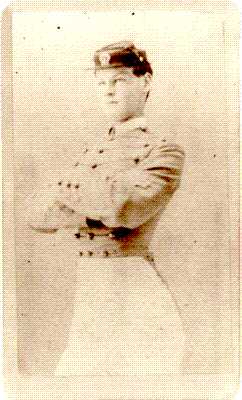 Sam and Margaret Houston had occasion for great rejoicing in 1854. Their long awaited son, Andrew Jackson Houston, was born on June 21 and named for his father's friend and mentor, President Andrew Jackson.
Sam and Margaret Houston had occasion for great rejoicing in 1854. Their long awaited son, Andrew Jackson Houston, was born on June 21 and named for his father's friend and mentor, President Andrew Jackson.
While attending Baylor University at Independence, Andrew developed a keen interest in girls, and his sister, Maggie, mentioned his admiration for his "sprucing up and visiting the girls."
Andrew was also something of a tease and enjoyed jokes played on his grandmother, the stately Nancy Lea. Once when Nancy Lea was "trying out" her coffin, she became struck. Andrew sprang into the room, giggling at the sight of his stout grandmother in the coffin. Finally he was persuaded to help her out.
After attending several military academies, Andrew Jackson attended West Point, but was honorably discharged for physical disabilities. During the period of reconstruction in Texas Andrew Jackson was active in organizing a local drill company, the Travis Rifles. The group helped implement the takeover of the capital by the new Democratic regime.
Andrew Jackson Houston was admitted to the State Bar of Texas and served as clerk of the United States District Court for the Northern District of Texas. The Houston's second son also organized and commanded a unit of the Texas Volunteer Guard and helped organized a troop of cavalry to serve under Teddy Roosevelt in the Spanish American war. In 1902 President Roosevelt named him United States Marshal for the Eastern District of Texas.
An ardent advocate of prohibition and the vote for women, Andrew Jackson Houston ran for governor of Texas on the prohibition ticket in both 1910 and 1912. Unsuccessful in his ventures in politics, he spent five years writing and painting on historical subjects. He also contributed a number of articles on Texas history to newspapers and was the author of The San Jacinto Campaign and Texas Independence.
From 1924 to 1941 Houston served as the superintendent of the San Jacinto battlefield. On April 21, 1941, Texas Governor W. Lee O'Daniel appointed him to the United States Senate to fill the seat vacated by the death of Senator Morris Shepherd. Houston was eighty-seven years old and became the oldest man to sit in the Senate. Before his death on June 26, 1941 Andrew Jackson Houston passed through the Senate an appropriation for $250,000 to complete the monument at the San Jacinto battleground.
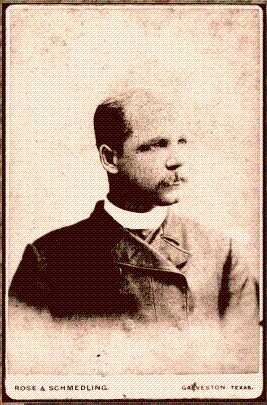 William Rogers Houston, the Houston's seventh child and third son, became well known as a special officer in the Indian service of the United States Department of the Interior. Born on May 25, 1858 at Huntsville, the boy was named for a favorite cousin of Margaret Lea's, the well-known Texas lawyer and soldier, Colonel William P. Rogers.
William Rogers Houston, the Houston's seventh child and third son, became well known as a special officer in the Indian service of the United States Department of the Interior. Born on May 25, 1858 at Huntsville, the boy was named for a favorite cousin of Margaret Lea's, the well-known Texas lawyer and soldier, Colonel William P. Rogers.
The child was never strong, and Margaret Lea had many an anxious moment about his health. By the time he was six years old however, his mother could write to Sam Jr. that "Willie Rogers is a very hale stout boy".
After his mother died, young Willie moved from Independence to Georgetown to live with his older sister, Nancy Elizabeth Houston Morrow and her husband. He attended public school in Georgetown and later was a student at Salado College and the Texas University at Georgetown.
The only one of the Houston children who never married, William Rogers was on duty as an officer of the Indian Service when he died. He was riding out of Hugo, Oklahoma on a mission to an Indian reservation, when he apparently suffered a heart attack and fell from his horse. His funeral was held in Dallas, with burial in Oak Cliff cemetery.
Throughout his lifetime, William Rogers' ties to his family were very close, and his lifelong friend, Cullen T. Tomas, said of him.
There is so much romance in his life, and I like to associate his death with his life's work...It is fitting that he should die in serving the remnant of that great American race with whom his father spent so much time and service years before.
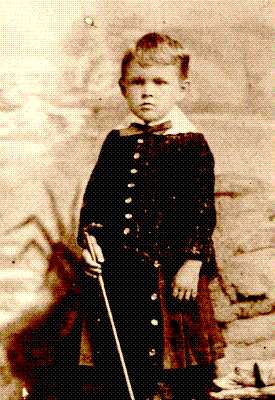 Temple Lea Houston, the last of Sam and Margaret's eight children was born on August 12, 1860, the first child born in the present governor's mansion in Austin, Texas. Temple Lea Houston was named after his mother's father. He was barely six months old when his father stepped down from the governor's office and Temple's infancy was spent at the Houston's vacation home at Cedar Point and at the rented Steamboat House in Huntsville.
Temple Lea Houston, the last of Sam and Margaret's eight children was born on August 12, 1860, the first child born in the present governor's mansion in Austin, Texas. Temple Lea Houston was named after his mother's father. He was barely six months old when his father stepped down from the governor's office and Temple's infancy was spent at the Houston's vacation home at Cedar Point and at the rented Steamboat House in Huntsville.
When his father died in 1863, Temple moved with his family to Independence; with his mother's death during a yellow fever epidemic in 1867, the young boy made his home with his sister "Nannie" and her husband in Georgetown, Texas.
He entered Baylor University at Independence, and graduated in 1878. Then he enrolled at Texas Agricultural and Mechanical College to receive a year of military training.
When he completed his college work, Temple read for the Texas State Bar at the La Grange law firm of Timmons and Brown. He was admitted to the bar and appointed district attorney of the Panhandle district of Texas in 1882.
As flamboyant as his famous father, Temple Lea was also as brilliant, making a name for himself on the west Texas frontier. For more than two decades from 1881 to 1905, Houston's colorful son was known as the southwest's most brilliant and eccentric trial lawyer. Cowboys, murderers, gunfighters, and cattle thieves were among his clients.
During his colorful career Temple Lea made many famous speeches, including one at San Jacinto in 1880 and another at the dedication of the Texas capital in 1888. He is best remembered, however, for his plea in the district court of Woodward, Oklahoma on behalf of Minnie Stacey "the soiled dove".
So effective was Temple Lea as an actor and attorney that the people of his district elected him their state senator in 1885, and he served in the Texas legislature during the nineteenth and twentieth sessions. Temple was much admired and one of his contemporaries described him in this manner:
"He was handsome, brilliant, and charming; a perfect model of physical manhood, six feet in height, straight as an Indian with a figure as exquisitely molded as a statue of ancient Greeks..."
On February 17, 1882 Temple Lea Houston married Laura Cross and the couple had four children, Temple Lea Jr., Sam, Mary Lea and Richard. During the later years of his life, Temple Lea and his family resided in Woodward, Oklahoma, where the lawyer was employed as attorney for the Santa Fe Railroad. Temple Lea Houston passed away and was buried in Woodward on August 18, 1905 and was survived by his widow and four children. His life had been as adventurous and exciting as his famous father's.